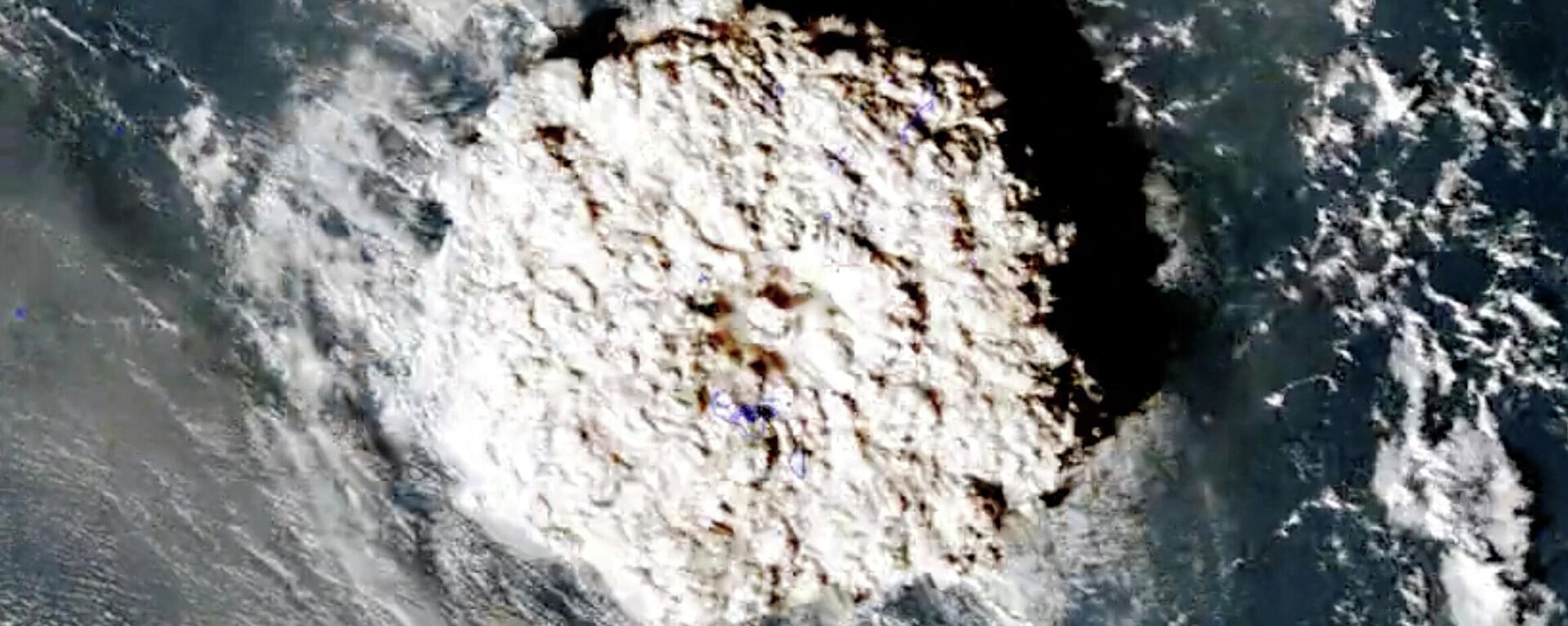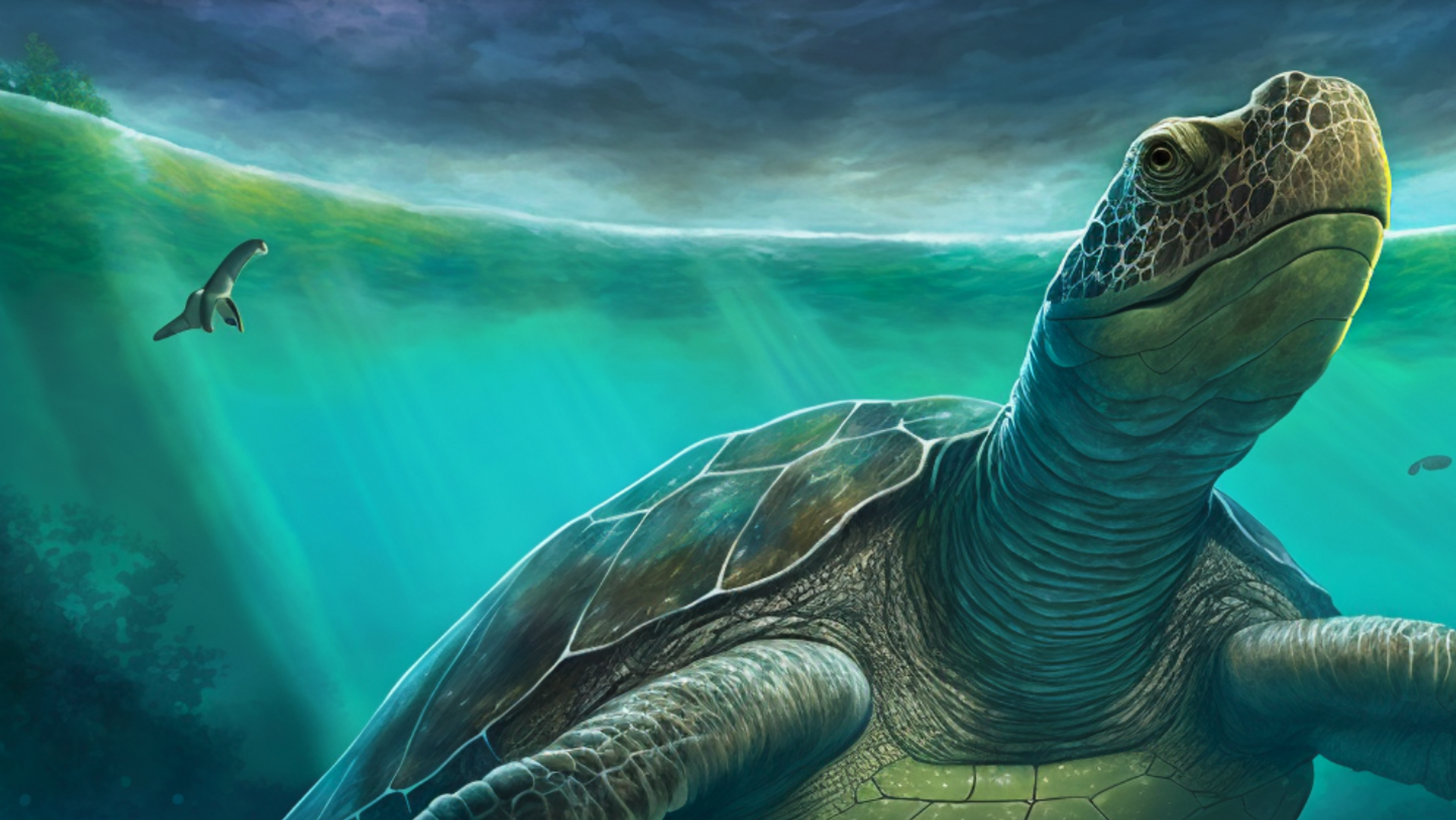https://sputnikglobe.com/20221118/scientists-discover-4000-pound-12-feet-long-turtle-that-lived-during-cretaceous-period-1104351586.html
Scientists Discover 4,000 pound, 12-feet-long Turtle That Lived During Cretaceous Period
Scientists Discover 4,000 pound, 12-feet-long Turtle That Lived During Cretaceous Period
Sputnik International
The Cretaceous Period refers to the geological era from 145 to 66 million years ago. It was the last era of the dinosaurs and large reptiles and fish still... 18.11.2022, Sputnik International
2022-11-18T04:04+0000
2022-11-18T04:04+0000
2022-11-18T04:02+0000
science & tech
prehistoric animal
turtle
discovery
study
https://cdn1.img.sputnikglobe.com/img/07e6/0b/12/1104352061_0:0:1443:813_1920x0_80_0_0_e477cd655e15ba13be2c820795ae27a8.png
Spanish Scientists have discovered a Cretaceous Period Turtle that was as large as a Mini-Cooper, according to a new paper published in Scientific Reports.The 12-foot-long sea turtle lived 83 million years ago and was found near the northern coast of Spain. At that time, the area was a subtropical archipelago.Named Leviathanochelys aenigmatica, the creature was roughly 4,000 pounds and would tower over the largest known living turtle, the leatherback, which is about 7 feet long and can weigh up to 1,500 pounds.However, the Leviathanochelys is not the largest prehistoric turtle ever found. That distinction goes to the Archelon turtle that lived some 70 million years ago, also during the Cretaceous Period, in an inland sea that once split the continent of North America. It was 15 feet long.The fossil was found outside of the village of Coll de Nargó after a hiker spotted a piece of it sticking out of the ground in the Southern Pyrenees Mountains. So far, part of the shell (carapace) and most of its pelvic girdle have been discovered. Its skull, tail, and limbs remain a mystery to scientists.Officials believe Leviathanochelys was primarily built for the sea, but hypothesize that it, like modern sea turtles, likely went inland to lay eggs.The pelvis also has some bony bulges on it, something not seen in other sea turtles, which suggests it's a brand new species and not the Archelon, or any other previously discovered prehistoric sea turtle.It is possible the bulges may have been related to the turtle’s respiratory system, allowing it to dive to greater depths.Animals – predators in particular – were typically larger during the Cretaceous Period, which may explain Leviathanochelys and Archelon’s large sizes. The size of the turtles likely made them a difficult, though not impossible target for predators at the time.Mosasaurs were massive shark-like, sea-living reptiles that belong to the same classification of animals that includes lizards and snakes.Leviathanochelys aenigmatica roughly means "enigmatic leviathan turtle" referring to the turtle’s large size and abnormal pelvic structure.
https://sputnikglobe.com/20220208/satellite-tracks-turtle-taking-giant-turn-before-tonga-volcanic-trouble-1092839426.html
Sputnik International
feedback@sputniknews.com
+74956456601
MIA „Rossiya Segodnya“
2022
News
en_EN
Sputnik International
feedback@sputniknews.com
+74956456601
MIA „Rossiya Segodnya“
Sputnik International
feedback@sputniknews.com
+74956456601
MIA „Rossiya Segodnya“
science & tech, prehistoric animal, turtle, discovery, study
science & tech, prehistoric animal, turtle, discovery, study
Scientists Discover 4,000 pound, 12-feet-long Turtle That Lived During Cretaceous Period
The Cretaceous Period refers to the geological era from 145 to 66 million years ago. It was the last era of the dinosaurs and large reptiles and fish still roamed the planet.
Spanish Scientists have discovered a Cretaceous Period Turtle that was as large as a Mini-Cooper, according to a new paper published in
Scientific Reports.
The 12-foot-long sea turtle lived 83 million years ago and was found near the northern coast of Spain. At that time, the area was a subtropical archipelago.
Named Leviathanochelys aenigmatica, the creature was roughly 4,000 pounds and would tower over the largest known living turtle, the leatherback, which is about 7 feet long and can weigh up to 1,500 pounds.
However, the Leviathanochelys is not the largest prehistoric turtle ever found. That distinction goes to the Archelon turtle that lived some 70 million years ago, also during the Cretaceous Period, in an inland sea that once split the continent of North America. It was 15 feet long.
The fossil was found outside of the village of Coll de Nargó after a hiker spotted a piece of it sticking out of the ground in the Southern Pyrenees Mountains. So far, part of the shell (carapace) and most of its pelvic girdle have been discovered. Its skull, tail, and limbs remain a mystery to scientists.

8 February 2022, 07:14 GMT
Officials believe Leviathanochelys was primarily built for the sea, but hypothesize that it, like modern sea turtles, likely went inland to lay eggs.
The pelvis also has some bony bulges on it, something not seen in other sea turtles, which suggests it's a brand new species and not the Archelon, or any other previously discovered prehistoric sea turtle.
It is possible the bulges may have been related to the turtle’s respiratory system, allowing it to dive to greater depths.
Animals – predators in particular – were typically larger during the Cretaceous Period, which may explain Leviathanochelys and Archelon’s large sizes. The size of the turtles likely made them a difficult, though not impossible target for predators at the time.
“Attacking an animal of the size of Leviathanochelys possibly only could have been done by large predators in the marine context,” explained Oscar Castillo, a student at Universitat Autònoma de Barcelona, and lead author of the study. “At that time, the large marine predators in the European zone were mainly sharks and mosasaurs.”
Mosasaurs were massive shark-like, sea-living reptiles that belong to the same classification of animals that includes lizards and snakes.
Leviathanochelys aenigmatica roughly means "enigmatic leviathan turtle" referring to the turtle’s large size and abnormal pelvic structure.


